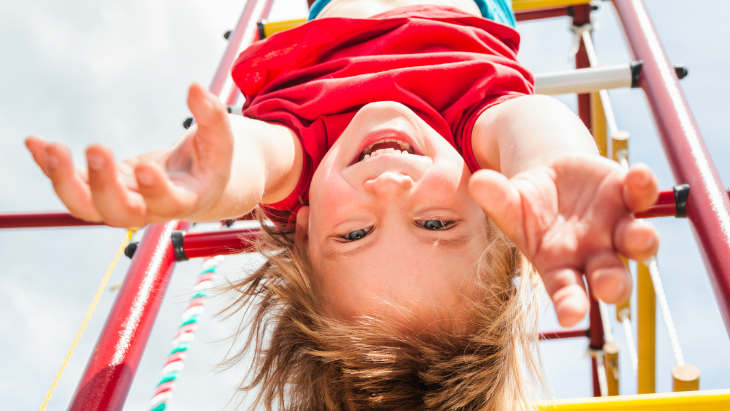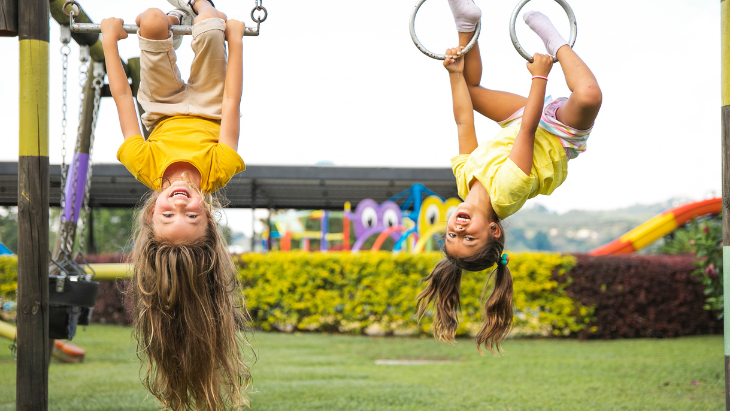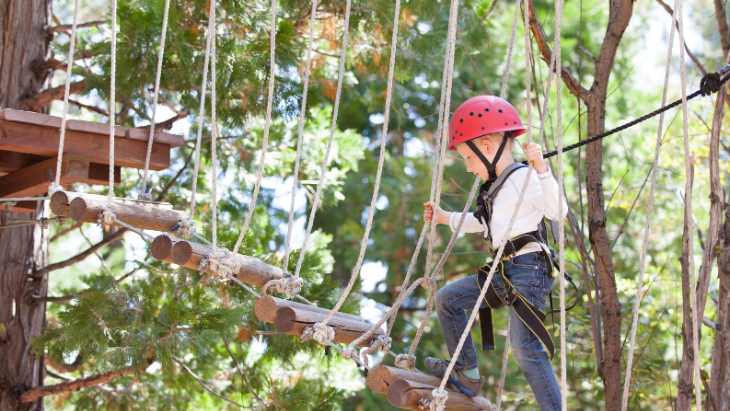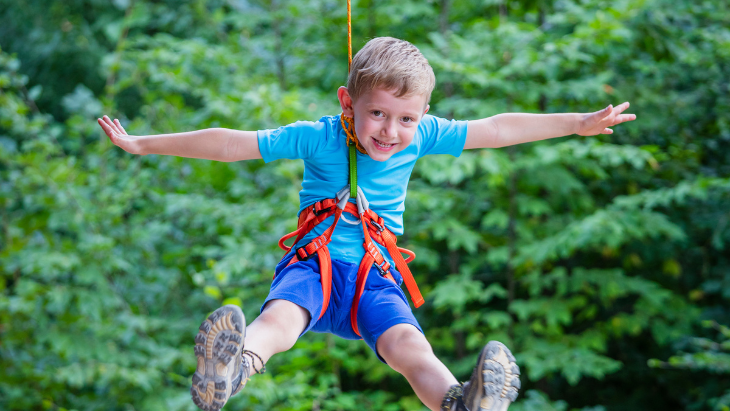Should You Let Your Child Embrace ❛Risky❜ Play?
- Kids
All Ages

As a mum of a lively, almost three-year-old boy, I've seen my fair share of scraped knees and triumphant grins. In two and a half years, I've also already voiced enough "be careful!" exclamations to last a lifetime.
But recent insights from Dr. Elise Waghorn, an education expert at RMIT University, have me contemplating: Are we, as parents, too cautious with our kids?
The Surprising Benefits of Risky Play

Dr. Waghorn advocates for the benefits of 'risky' play. You know, the kind where children climb a little higher, run a bit faster, and perhaps handle tools that aren't made of plastic. It's the type of play that makes many of us, myself included, instinctively want to shout, "Watch out!"
But here's the twist: According to Dr. Waghorn, it's time we bite our tongues. She argues that the advantages of allowing children to engage in calculated risks far outweigh the potential for harm. And frankly, her points are compelling, even to a mum who's read every child safety manual cover to cover.
Risky play isn't about reckless abandon; it's about scaling heights, wrestling, and perhaps dabbling in games that don't always end with a predictable, safe outcome.
It's about letting kids bike, run, and explore without an adult shadowing their every move. Such activities, Dr. Waghorn suggests, are crucial for developing gross motor skills, muscle strength, and even aiding concentration. Plus, they're a natural antidote to the tech-obsessed world our kids are growing up in.

I can't help but chuckle at the irony. Here I am, someone who's spent years perfecting the art of the 'gentle reminder' and the 'cautious nudge,' now considering letting my little one venture a bit further into the world of risk.
Dr. Waghorn's findings suggest that there's more to gain than lose: improved physical abilities, emotional expression, and peer relationships, not to mention the sheer thrill and confidence that come from mastering a new skill.
It seems that in our quest to protect our children, we might be missing out on giving them invaluable life lessons. Lessons in resilience, testing limits, and learning from their own triumphs and mishaps. So, the question I'm mulling over as a mum, and I invite you to ponder too, is: Should we loosen the reins a bit?
Risky play might sound daunting, but perhaps it's time to redefine what 'playing it safe' really means for our children's development. After all, as Dr. Waghorn notes, kids love pushing boundaries. Maybe it's time we let them, just a little.
Balancing Caution and Courage: Practical Tips for Parents
As a parent, finding the balance between protecting our children and letting them explore their boundaries can feel like walking a tightrope.
After mulling over Dr. Elise Waghorn's insights, I've gathered a few practical tips to help us navigate this delicate balance:

- Start Small: If the thought of your child scaling the tallest slide at the park sends shivers down your spine, start with smaller challenges. Maybe it's letting them climb a tree they usually wouldn't or use a tool under supervision. Small steps can lead to big gains in confidence for you and your child.
- Safety in Knowledge: Teach your child about risks rather than shielding them entirely. Understanding why something is risky helps children make informed decisions. This doesn't mean a lecture on every outing, but a casual conversation about why we look both ways before crossing the street, for instance, can be invaluable.
- Supervise, Don't Smother: There's a fine line between supervision and smothering. Be present, but give your child the space to explore. It's about being close enough to intervene if necessary but far enough to let them experience things on their own.
- Embrace the Bumps and Bruises: It's natural to want to protect your child from every scrape and bruise, but these are often part of learning and growing. A little tumble can teach them more about their abilities and limits than a dozen warnings.
- Trust Your Child: Children are often more capable than we give them credit for. Trust in their ability to learn and adapt. This trust not only boosts their confidence but also encourages them to be more mindful and responsible.
- Know Your Child: Every child is different. What works for one may not work for another. Understand your child's temperament and readiness for certain types of play. This personalised approach will be more effective than a one-size-fits-all strategy.
As a mum who's learning to let go, I'm realising that parenting isn't just about keeping our kids safe from harm. It's also about preparing them for life, and sometimes that means stepping back and watching them climb a little higher than we're comfortable with. After all, isn't life itself a bit of a risky play?
More Fun Reads
25 of the Best Outdoor Toys for Kids
The Best Beach Towels in Australia
Where to Shop for the Best Kids' Raincoats
Have you signed up to our newsletter? Join ellaslist to get the best family and kid-friendly events, venues, classes and things to do NEAR YOU!
Reviews


